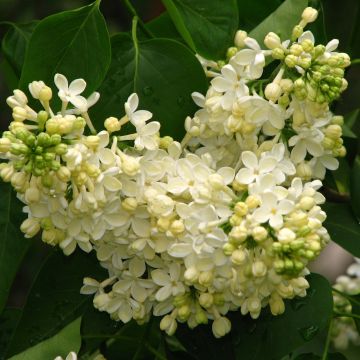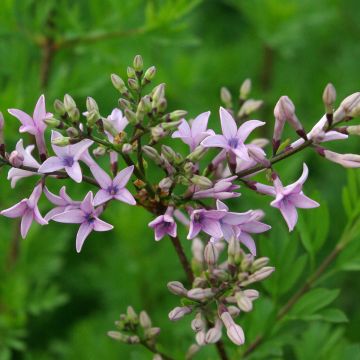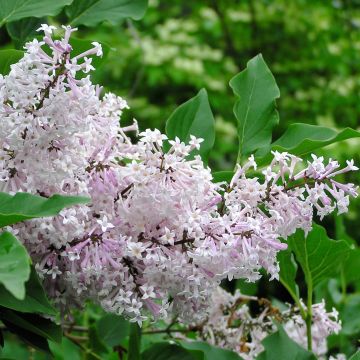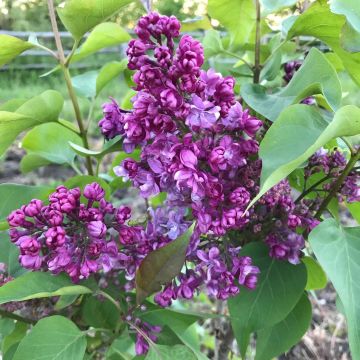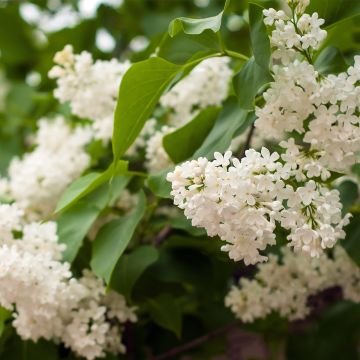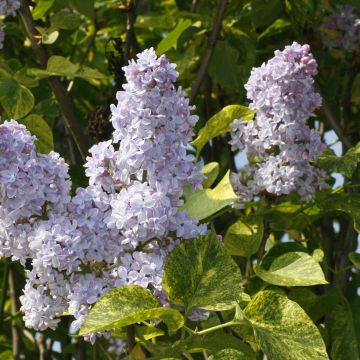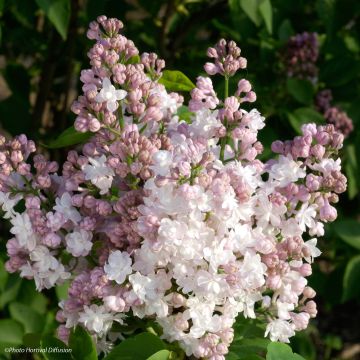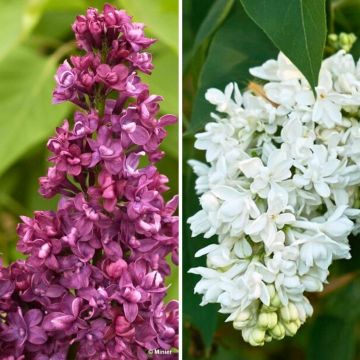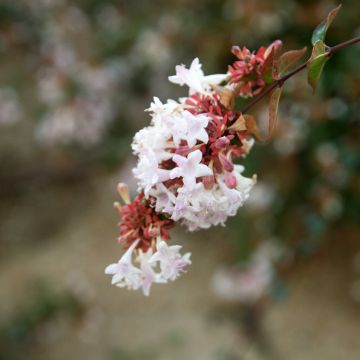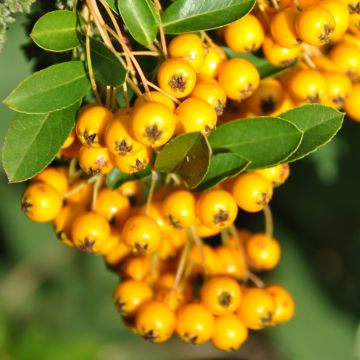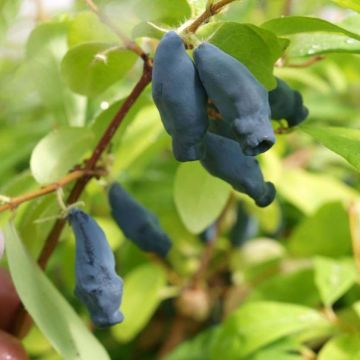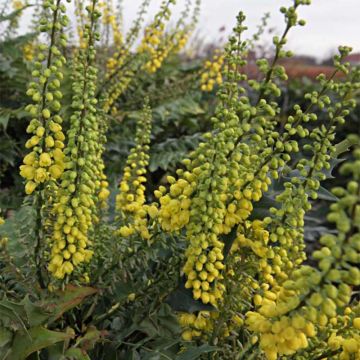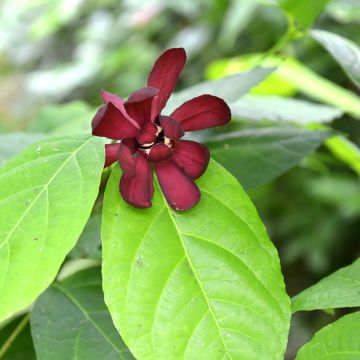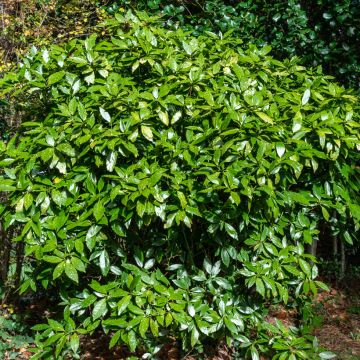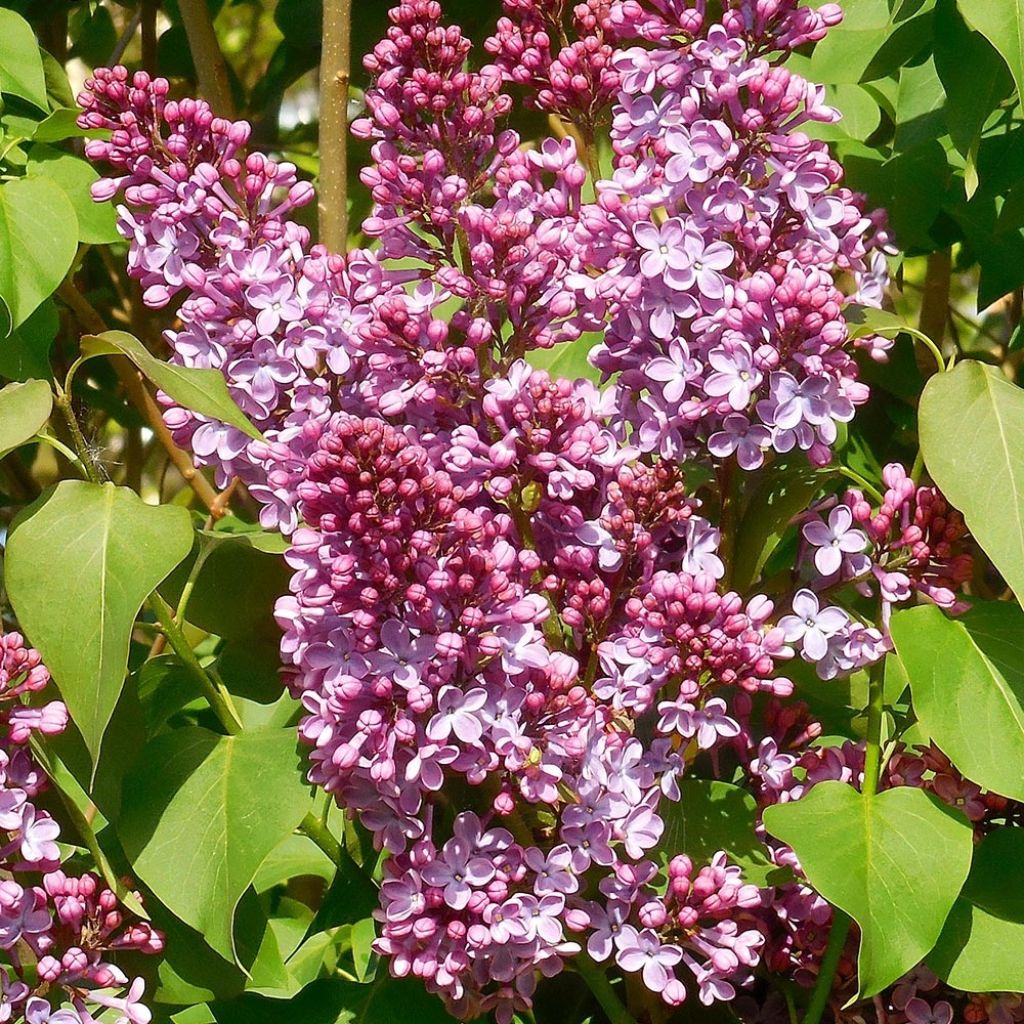

Syringa vulgaris Princesse Sturdza - Common Lilac
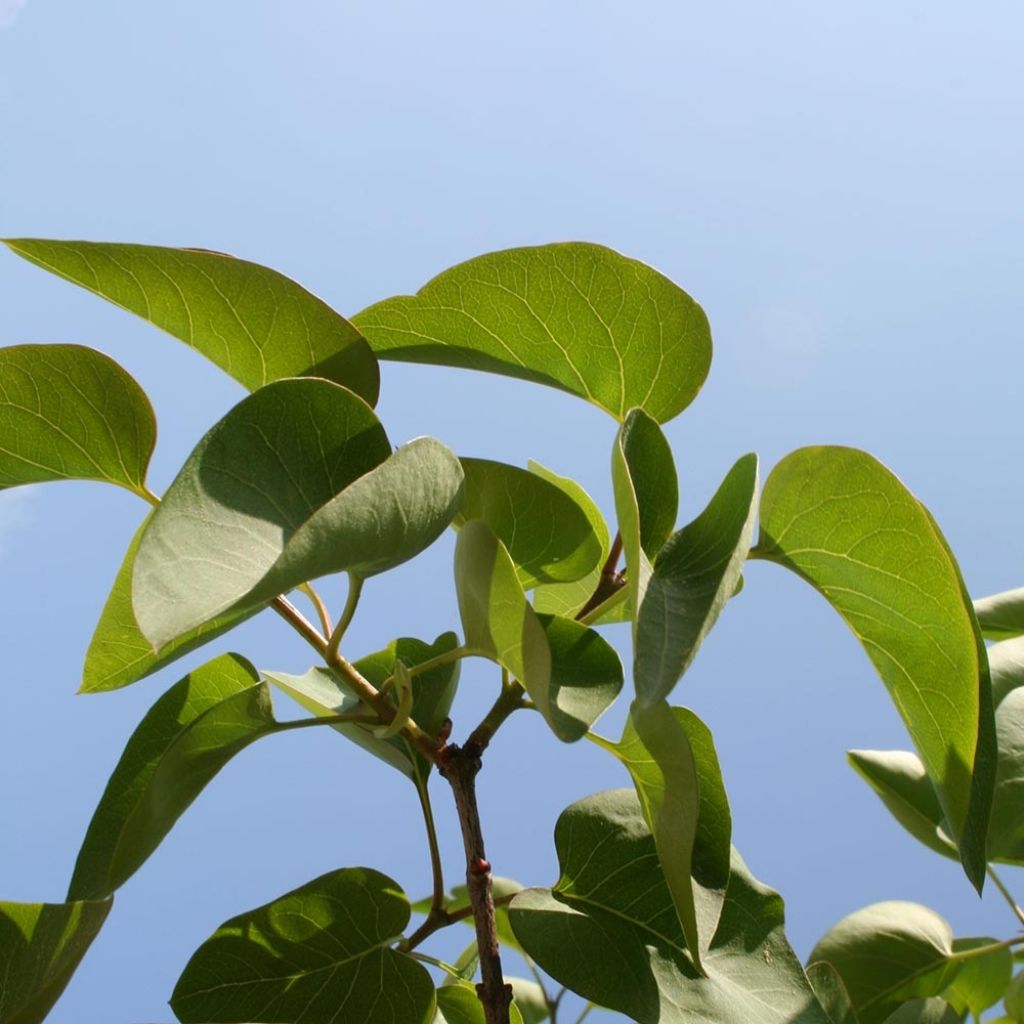

Syringa vulgaris Princesse Sturdza - Common Lilac
Syringa vulgaris Princesse Sturdza - Common Lilac
Syringa vulgaris Princesse Sturdza
Common Lilac, Lilac
This item cannot be shipped to the selected country
Delivery charge from €5.90
More information
Schedule delivery date,
and select date in basket
This plant carries a 24 months recovery warranty
More information
We guarantee the quality of our plants for a full growing cycle, and will replace at our expense any plant that fails to recover under normal climatic and planting conditions.
From €5.90 for pickup delivery and €6.90 for home delivery
Express home delivery from €8.90.
Does this plant fit my garden?
Set up your Plantfit profile →
Description
The Common Lilac 'Princesse Sturdza' is a variety created by Minier in 1996 named after the creator of the magnificent Vasterival garden in Normandy. This variety is renowned for its large single flowers in April of lilac-pink colour, dark pink in bud. This lilac is a medium-sized shrub with a bushy, quite open habit. It can be used in association with other bushes in a free hedge or in a cluster as well as isolated in the middle of a short grass meadow or at the edge of a passage where one can enjoy the scent of its spring flowering. Vigorous and easy to cultivate in the sun, in all types of normal and well-drained soil.
The Syringa vulgaris 'Princesse Sturdza' is a very hardy bush from the Oleaceae family, like all horticultural hybrid lilacs obtained at the end of the 19th century. It is often forgotten that its ancestor the common lilac, also known as European Lilac, is native to Southeast Europe and western Asia, more precisely from the Balkan Peninsula, and that it arrived in Western Europe at the end of the Renaissance. In nature, this untamed plant with very fragrant blue-violet-purple flowers colonises the rocky hills and braves cold winters.
The variety 'Princesse Sturdza' is a lilac that over the years forms a small tree with a erect habit, a height of 3 m (9 ft 10 in) and a span of 2 m (6 ft 7 in), on average. It spontaneously develops into a bush composed of several stems, like the mock orange with which it must not be confused. Its stump emits shoots that sometimes need to be cut off to preserve its beautiful aspect of a small tree. Its leaves, triangular and heart-shaped, 8 to 12 cm (3.1 to 4.7 in) long and 3 to 8 cm (1.2 to 3.1 in) wide, appear in the spring, in a medium green shade, with a satin finish. The flowering takes place in April, more or less early depending on the climate. At the end of one-year branches appear, in pairs, compound clusters, called thyrsus, 15 to 20 cm (5.9 to 7.9 in) long. The colour of the inflorescences evolves from dark pink floral buds to lighter lilac-pink single flowers, quite fragrant.
The strength that emanates from the classic silhouette of a lilac, anchored on multiple trunks, as well as the generosity of the flowering sometimes deserve a place of choice, in isolation, in a small garden. Surrounded by a bed of ground cover roses and nepetas, in a small space dedicated to it, this modest subject will become a grandiose bush, covered with glory in the heart of spring. Easy to grow in cool and relatively wet climates, the Common Lilac thrives in ordinary, fresh, rather calcareous but free-draining soils. Use it, mixed with other pink, mauve or red varieties, in abundance, in large flowering hedges, in the company of single flowered roses, mock oranges, amelanchiers, Crataegus Paul's Scarlet, Cotinus or large buddleias (B. alternifolia). A hedge of lilacs, flowering Prunus, Chinese Almond, flowering cherries and ornamental apples, planted above a large sunken alley, is a true enchantment in spring.
Report an error about the product description
Syringa vulgaris Princesse Sturdza - Common Lilac in pictures
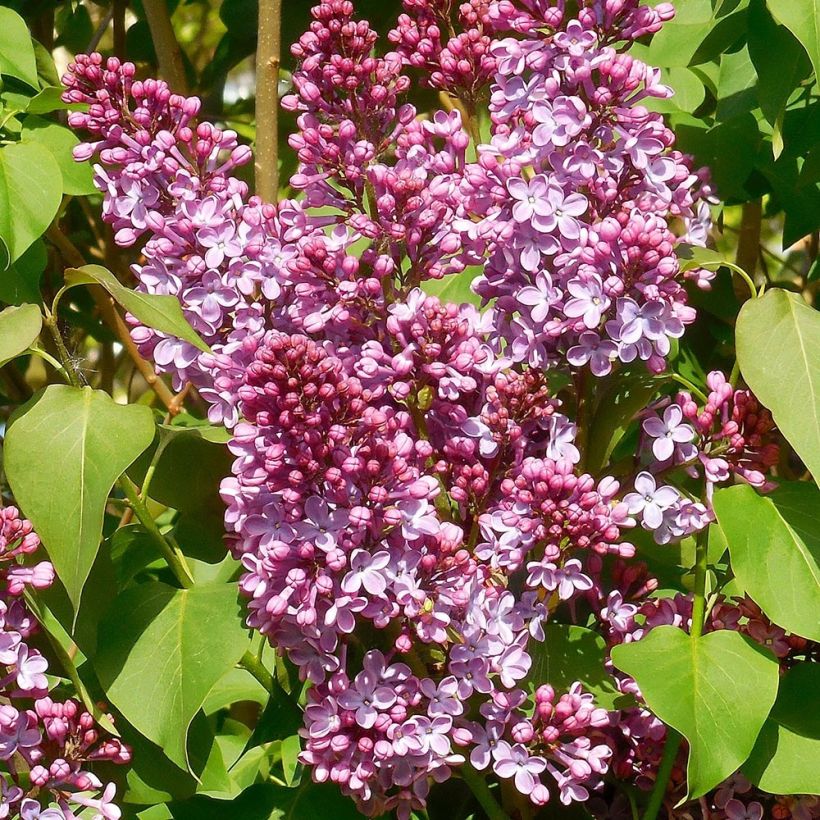

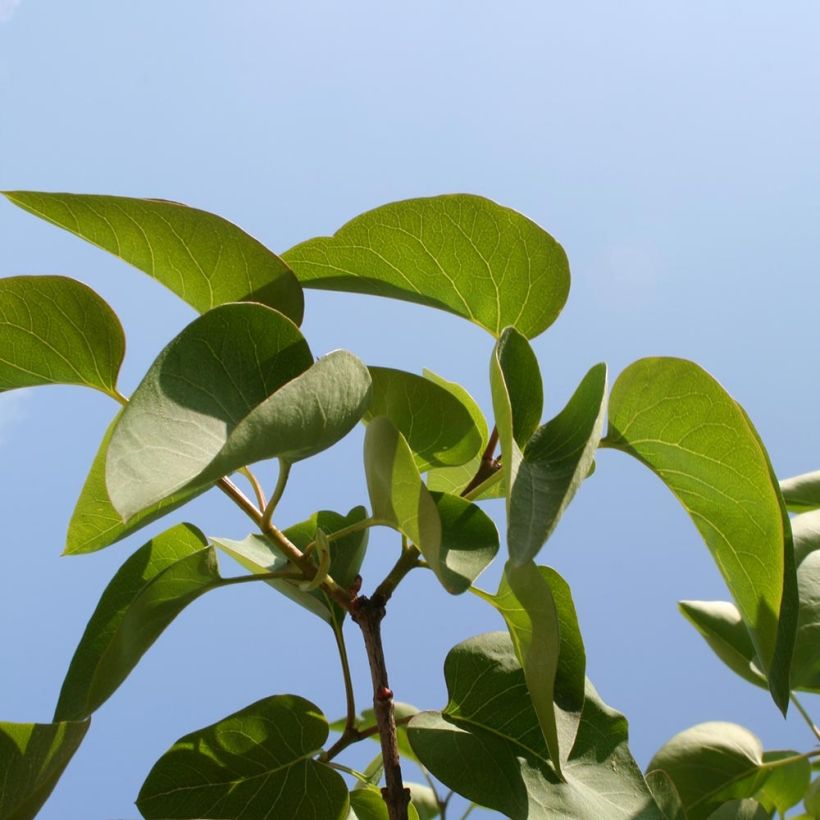

Plant habit
Flowering
Foliage
Botanical data
Syringa
vulgaris
Princesse Sturdza
Oleaceae
Common Lilac, Lilac
Cultivar or hybrid
Other Syringa - Lilac
Planting and care
The Lilac 'Princesse Sturdza' appreciates being planted in full sun, in soil that stays fairly fresh, well-drained, even a bit rocky. It tolerates all types of soil, but prefers slightly calcareous lands and fears highly acidic soils. It will grow well in semi-shaded exposure, but the flowering will be somewhat reduced. Its hardiness is excellent, beyond -15°C (5 °F). Easy to grow, it only requires mulching and regular watering in summer in a dry climate, to maintain a certain humidity. While the common lilac grows well in the south of our region, its large-flowered hybrids often suffer from the lack of water that often disfigures their thirsty vegetation. In all cases, water it in the first years in case of marked drought. You can prune the flowering shoots to make beautiful bouquets, or at the end of flowering to encourage the appearance of new flowers and avoid exhausting the bush. Avoid severe pruning that limits the flowering of the following spring, unless your Lilac becomes too large. Remove the shoots that form at the base of the bush if you want to keep the habit of a small tree.
Planting period
Intended location
Care
This item has not been reviewed yet - be the first to leave a review about it.
Hedge shrubs
Haven't found what you were looking for?
Hardiness is the lowest winter temperature a plant can endure without suffering serious damage or even dying. However, hardiness is affected by location (a sheltered area, such as a patio), protection (winter cover) and soil type (hardiness is improved by well-drained soil).

Photo Sharing Terms & Conditions
In order to encourage gardeners to interact and share their experiences, Promesse de fleurs offers various media enabling content to be uploaded onto its Site - in particular via the ‘Photo sharing’ module.
The User agrees to refrain from:
- Posting any content that is illegal, prejudicial, insulting, racist, inciteful to hatred, revisionist, contrary to public decency, that infringes on privacy or on the privacy rights of third parties, in particular the publicity rights of persons and goods, intellectual property rights, or the right to privacy.
- Submitting content on behalf of a third party;
- Impersonate the identity of a third party and/or publish any personal information about a third party;
In general, the User undertakes to refrain from any unethical behaviour.
All Content (in particular text, comments, files, images, photos, videos, creative works, etc.), which may be subject to property or intellectual property rights, image or other private rights, shall remain the property of the User, subject to the limited rights granted by the terms of the licence granted by Promesse de fleurs as stated below. Users are at liberty to publish or not to publish such Content on the Site, notably via the ‘Photo Sharing’ facility, and accept that this Content shall be made public and freely accessible, notably on the Internet.
Users further acknowledge, undertake to have ,and guarantee that they hold all necessary rights and permissions to publish such material on the Site, in particular with regard to the legislation in force pertaining to any privacy, property, intellectual property, image, or contractual rights, or rights of any other nature. By publishing such Content on the Site, Users acknowledge accepting full liability as publishers of the Content within the meaning of the law, and grant Promesse de fleurs, free of charge, an inclusive, worldwide licence for the said Content for the entire duration of its publication, including all reproduction, representation, up/downloading, displaying, performing, transmission, and storage rights.
Users also grant permission for their name to be linked to the Content and accept that this link may not always be made available.
By engaging in posting material, Users consent to their Content becoming automatically accessible on the Internet, in particular on other sites and/or blogs and/or web pages of the Promesse de fleurs site, including in particular social pages and the Promesse de fleurs catalogue.
Users may secure the removal of entrusted content free of charge by issuing a simple request via our contact form.
The flowering period indicated on our website applies to countries and regions located in USDA zone 8 (France, the United Kingdom, Ireland, the Netherlands, etc.)
It will vary according to where you live:
- In zones 9 to 10 (Italy, Spain, Greece, etc.), flowering will occur about 2 to 4 weeks earlier.
- In zones 6 to 7 (Germany, Poland, Slovenia, and lower mountainous regions), flowering will be delayed by 2 to 3 weeks.
- In zone 5 (Central Europe, Scandinavia), blooming will be delayed by 3 to 5 weeks.
In temperate climates, pruning of spring-flowering shrubs (forsythia, spireas, etc.) should be done just after flowering.
Pruning of summer-flowering shrubs (Indian Lilac, Perovskia, etc.) can be done in winter or spring.
In cold regions as well as with frost-sensitive plants, avoid pruning too early when severe frosts may still occur.
The planting period indicated on our website applies to countries and regions located in USDA zone 8 (France, United Kingdom, Ireland, Netherlands).
It will vary according to where you live:
- In Mediterranean zones (Marseille, Madrid, Milan, etc.), autumn and winter are the best planting periods.
- In continental zones (Strasbourg, Munich, Vienna, etc.), delay planting by 2 to 3 weeks in spring and bring it forward by 2 to 4 weeks in autumn.
- In mountainous regions (the Alps, Pyrenees, Carpathians, etc.), it is best to plant in late spring (May-June) or late summer (August-September).
The harvesting period indicated on our website applies to countries and regions in USDA zone 8 (France, England, Ireland, the Netherlands).
In colder areas (Scandinavia, Poland, Austria...) fruit and vegetable harvests are likely to be delayed by 3-4 weeks.
In warmer areas (Italy, Spain, Greece, etc.), harvesting will probably take place earlier, depending on weather conditions.
The sowing periods indicated on our website apply to countries and regions within USDA Zone 8 (France, UK, Ireland, Netherlands).
In colder areas (Scandinavia, Poland, Austria...), delay any outdoor sowing by 3-4 weeks, or sow under glass.
In warmer climes (Italy, Spain, Greece, etc.), bring outdoor sowing forward by a few weeks.


































